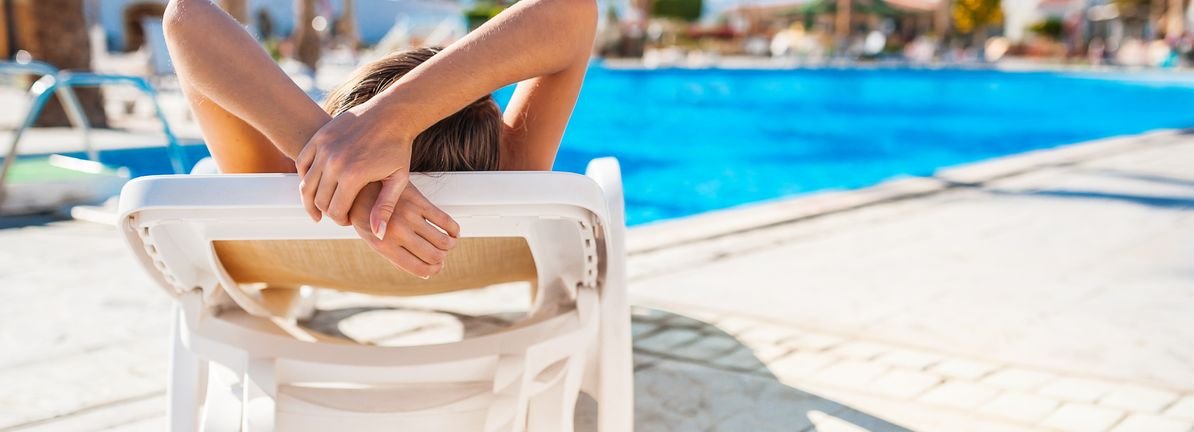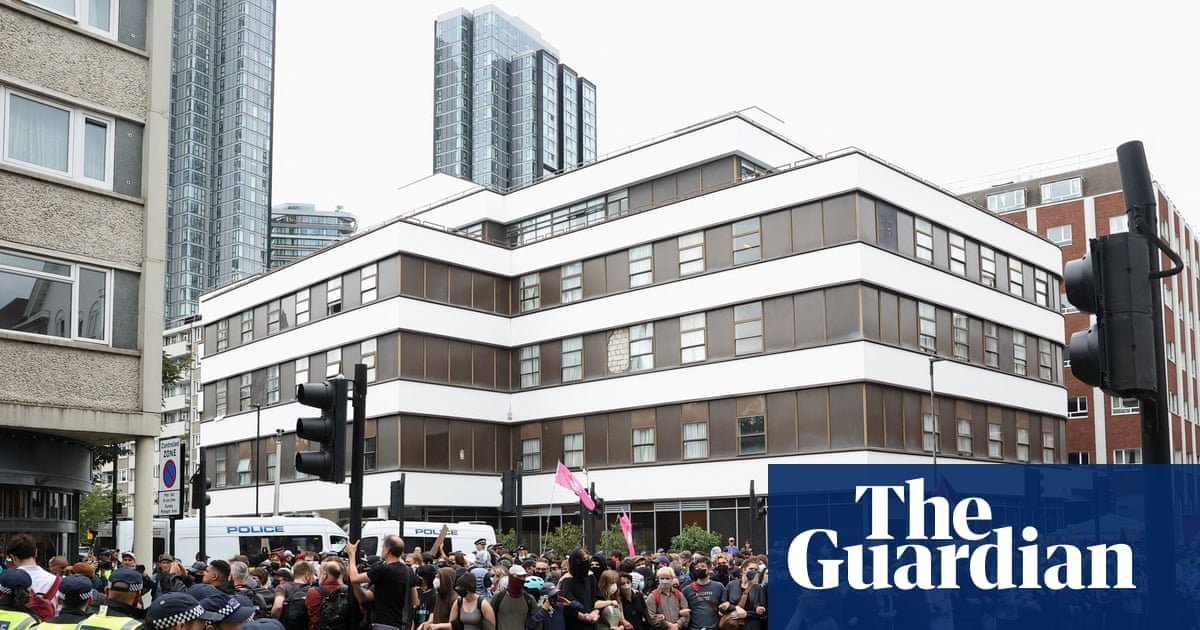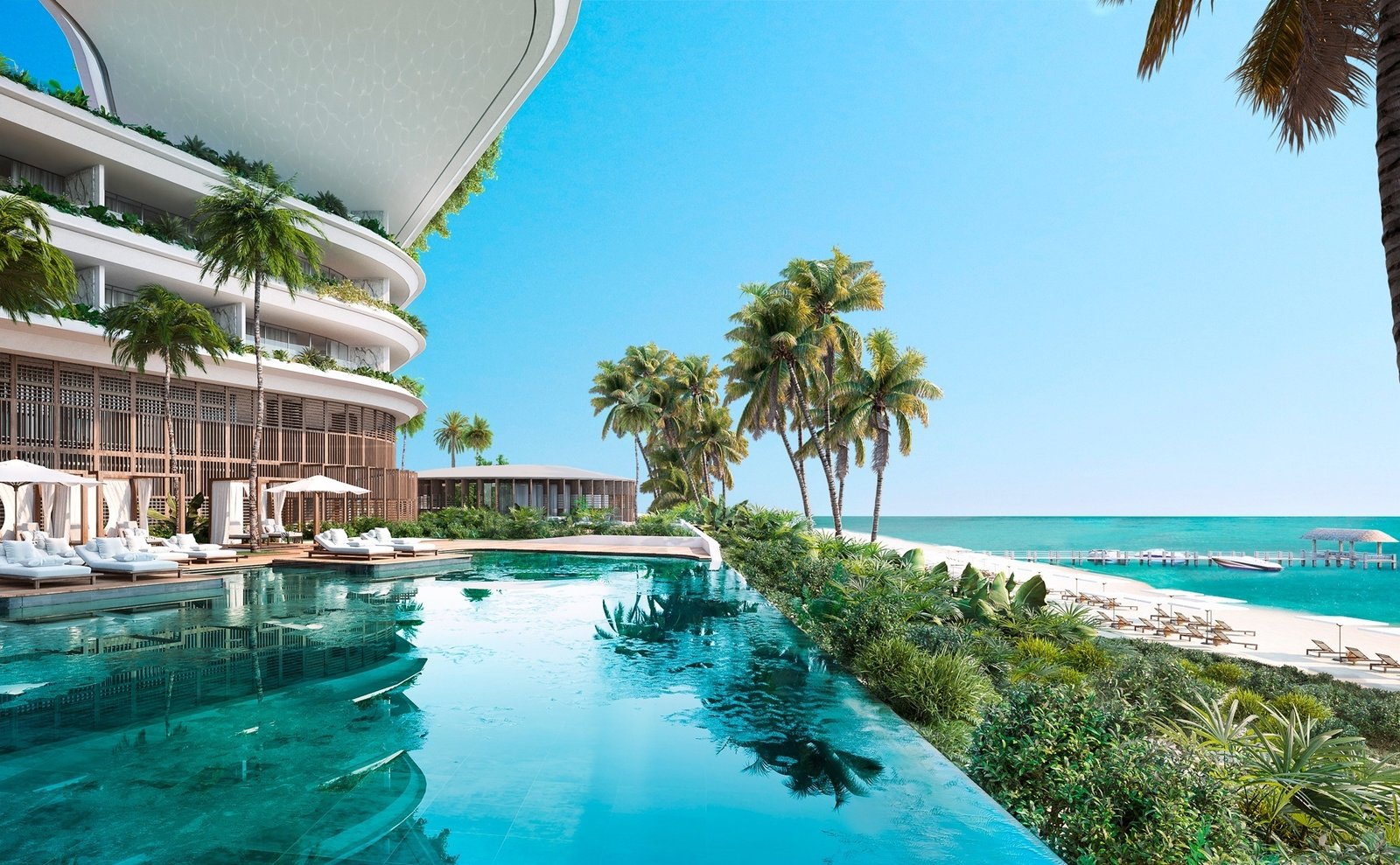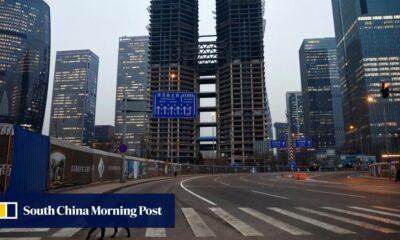Hotels & Accommodations
InterContinental Hotels Group’s (LON:IHG) investors will be pleased with their impressive 146% return over the last five years

When you buy shares in a company, it’s worth keeping in mind the possibility that it could fail, and you could lose your money. But on a lighter note, a good company can see its share price rise well over 100%. Long term InterContinental Hotels Group PLC (LON:IHG) shareholders would be well aware of this, since the stock is up 130% in five years. In the last week the share price is up 2.5%.
So let’s investigate and see if the longer term performance of the company has been in line with the underlying business’ progress.
In his essay The Superinvestors of Graham-and-Doddsville Warren Buffett described how share prices do not always rationally reflect the value of a business. One imperfect but simple way to consider how the market perception of a company has shifted is to compare the change in the earnings per share (EPS) with the share price movement.
During five years of share price growth, InterContinental Hotels Group achieved compound earnings per share (EPS) growth of 14% per year. This EPS growth is lower than the 18% average annual increase in the share price. This suggests that market participants hold the company in higher regard, these days. And that’s hardly shocking given the track record of growth.
The company’s earnings per share (over time) is depicted in the image below (click to see the exact numbers).
We know that InterContinental Hotels Group has improved its bottom line over the last three years, but what does the future have in store? It might be well worthwhile taking a look at our free report on how its financial position has changed over time.
As well as measuring the share price return, investors should also consider the total shareholder return (TSR). The TSR is a return calculation that accounts for the value of cash dividends (assuming that any dividend received was reinvested) and the calculated value of any discounted capital raisings and spin-offs. Arguably, the TSR gives a more comprehensive picture of the return generated by a stock. We note that for InterContinental Hotels Group the TSR over the last 5 years was 146%, which is better than the share price return mentioned above. And there’s no prize for guessing that the dividend payments largely explain the divergence!
InterContinental Hotels Group provided a TSR of 15% over the year (including dividends). That’s fairly close to the broader market return. We should note here that the five-year TSR is more impressive, at 20% per year. Although the share price growth has slowed, the longer term story points to a business well worth watching. It’s always interesting to track share price performance over the longer term. But to understand InterContinental Hotels Group better, we need to consider many other factors. To that end, you should be aware of the 2 warning signs we’ve spotted with InterContinental Hotels Group .
Hotels & Accommodations
Protesters oppose one another at London hotel housing asylum seekers | Protest

Anti-racism demonstrators have turned out in large numbers outside a London hotel where asylum seekers are being housed to counter-protest against those opposed to it being used as Home Office accommodation.
Both groups of protesters gathered near the Thistle City Barbican hotel in Islington, north London.
The Metropolitan police said the anti-hotel protest was organised by a number of people under the banner “Thistle Barbican needs to go – locals say no”, but it has since been endorsed by groups from outside the area. Online groups that have voiced support for the protest include Patriots of Britain and Together for the Children.
One speaker at the anti-hotel protest, which had a turnout of about 100 people, claimed counter-protesters had been paid by “the Labour government and the trade unions” to attend. Some of those who gathered across the road from the hotel wore Mega (Make England great again) hats and one man was heard chanting “Get these scum off our streets” towards the hotel.
Directly outside the hotel, hundreds of people attended a counter-protest organised by Stand Up to Racism and supported by the former Labour party leader Jeremy Corbyn, who is the MP for Islington North, located on the other side of the borough. They far outnumbered the anti-hotel protesters.
Some people in the hotel could be seen watching the demonstration from their windows. Sarah Bailey, 63, who is retired, held a sign that said: “To everyone in the hotel, you are valued, wanted [and] welcome.
“I know somebody that has connections with this hotel. I thought it was so important, because I realised they would be looking out of the windows, that we send a positive sign saying you are all these three things.
“I think it’s so important to show people that have come here seeking safety and protection that they are welcome and to stand up to those who scare and bully them,” she said.
Pat Prendergast, 21, said: “I want people to feel safe. I think the [anti-hotel protesters] over there are making people feel unsafe. I want to stand up in solidarity and say that, you know, we want people here.”
A separate group of masked protesters, dressed in black and chanting “we are anti-fascist”, appeared from a sidestreet and marched towards the anti-hotel demonstration.
after newsletter promotion
The Met said plans were in place to “respond to any protest activity in the vicinity of other hotels in London being used to accommodate asylum seekers”.
A protest and counter-protest was also due in Newcastle outside the New Bridge hotel on Saturday. There were also posts online advertising a “For our children, for our future” protest in Newcastle on Saturday outside the hotel.
A “stop the far right and fascists in Newcastle” counter-protest has been organised by Stand Up to Racism at the nearby Laing art gallery.
On Friday evening, about 100 people attended a protest outside the Stanwell hotel in Spelthorne. Surrey police said a packet of lit firelighters was thrown at officers at the demonstration. The force added that a man was arrested on suspicion of attempted arson and inquiries were continuing to trace another suspect.
Hotels & Accommodations
Why Hotel Companies Can’t Afford to Ignore the Wellness Economy |

By Larry and Adam Mogelonsky – 8.2.2025
Health, wealth and relationships are the three timeless markets, and hospitality touches all of them. The key question is, what does it truly mean to care for the health of a hotel guest?
This is where wellness (as the offering) and wellbeing (as the outcome) come in. Tracking how guests engage with wellness amenities can shape custom itineraries, increase ancillary revenue and even show tangible health gains over time, such as improving heart rate variability (HRV), a strong indicator of stress and vascular resilience.
You may wonder, “Why focus on wellness data when we’re still cleaning up our core ops?”
Fair question. But wellness is shaping up to be a trillion-dollar opportunity. Just think back to the last time you were unwell: productivity, plans and responsibilities all took a back seat. Wellness habits like sauna use, healthy eating and supplementation are increasingly seen as preventive health investments, reducing sick days and enhancing overall performance. And once someone experiences those benefits, the loyalty is hard to shake.
Wellness is habitual by nature, which means repeat guests and recurring spend. Travelers are now choosing hotels based on wellness offerings, whether it’s a destination retreat or premium amenities at a city property. That means hotels must identify their wellness-minded guests and tailor messaging, upsells and experiences accordingly. Data helps reveal patterns, inform capital decisions and build campaigns around high-value, health-conscious travelers.
Step one is merchandising wellness consistently throughout the guest journey. That includes marketing, packages, upsells and even group offers. Every digital interaction – from fitness class signups to gym keycard swipes – creates data. This should flow into your warehouse and CRM, where future AI tools will mine it for insight. Painful as integrations can be, tracking what guests book and when can drive improvements in RevPAG and even justify rate premiums.
A powerful real-world example is SHA Wellness Clinic in Spain and Mexico. Their 7 to 14-night programs span diagnostics, fitness, nutrition and hydrotherapy, with all of them being very data-heavy. Recently, they began integrating WHOOP wearables to track metrics like HRV, blood oxygen and recovery. That data feeds into SHA’s systems to adjust guest schedules in real-time. Bad sleep? Move the workout. Slow recovery? Add more protein. It’s dynamic personalization powered by health insights.
Yes, SHA is a specialized player, but it signals what’s coming. As wearable tech and wellness platforms become mainstream, the hotels that adopt early will be best positioned to lead. Don’t wait for perfect infrastructure; start where you are, and let data be the bridge to better service, better outcomes and stronger financials.
Together, Adam and Larry Mogelonsky are the principals at Hotel Mogel Consulting Ltd., an asset management and hotel development consultancy. Their experience encompasses properties around the world, both branded and independent in the luxury and boutique categories. Their writing includes eight books: “Total Hotel Mogel” (2024), “In Vino Veritas: A Guide for Hoteliers and Restaurateurs to Sell More Wine” (2022), “More Hotel Mogel” (2020), “The Hotel Mogel” (2018), “The Llama is Inn” (2017), “Hotel Llama” (2015), “Llamas Rule” (2013) and “Are You an Ostrich or a Llama?” (2012). You can reach them at adam@hotelmogel.com to discuss business challenges or for speaking engagements.
Are you an industry thought leader with a point of view on hotel technology that you would like to share with our readers? If so, we invite you to review our editorial guidelines and submit your article for publishing consideration.
Related
Hotels & Accommodations
Braemar Hotels & Resorts Inc. (NYSE:BHR) Q2 2025 Earnings Call Transcript

Braemar Hotels & Resorts Inc. (NYSE:BHR) Q2 2025 Earnings Call Transcript August 1, 2025
Operator: Hello, and thank you for standing by. My name is Regina, and I will be your conference operator today. At this time, I would like to welcome everyone to the Braemar Hotels & Resorts, Inc. Second Quarter 2025 Results Conference Call. [Operator Instructions] I would now like to turn the conference over to Deric Eubanks, Chief Financial Officer. Please go ahead.
Deric S. Eubanks: Good morning, and welcome to today’s call to review results for Braemar Hotels & Resorts for the second quarter of 2025 and to update you on recent developments. On the call today will also be Richard Stockton, President and Chief Executive Officer; and Chris Nixon, Executive Vice President and Head of Asset Management. The results as well as notice of the accessibility of this conference call on a listen-only basis over the Internet were distributed yesterday in a press release. At this time, let me remind you that certain statements and assumptions in this conference call contain or based upon forward-looking information and are being made pursuant to the safe harbor provisions of the federal securities regulations.
Such forward-looking statements are subject to numerous assumptions, uncertainties and known or unknown risks, which could cause actual results to differ materially from those anticipated. These factors are more fully discussed in the company’s filings with the Securities and Exchange Commission. The forward-looking statements included in this conference call are only made as of the date of this call, and the company is not obligated to publicly update or revise them. Statements made during this call do not constitute an offer to sell or a solicitation of an offer to buy any securities. Securities will be offered only by means of a registration statement and prospectus, which can be found at www.sec.gov. In addition, certain terms used in this call are non-GAAP financial measures, reconciliations of which are provided in the company’s earnings release and accompanying tables or schedules, which have been filed on Form 8-K with the SEC on July 31, 2025, and may also be accessed through the company’s website at www.bhrreit.com.
Each listener is encouraged to review those reconciliations provided in the earnings release, together with all other information provided in the release. Also, unless otherwise stated, all reported results discussed in this call compare the second quarter ended June 30, 2025, with the second quarter ended June 30, 2024. I will now turn the call over to Richard Stockton. Please go ahead, Richard.
Richard J. Stockton: Good morning. Welcome to our second quarter earnings conference call. I’ll begin today’s call by providing an overview of our recent results and our strategic priorities for the second half of 2025. Then Deric will provide a review of our financial results, and Chris will provide an update on our asset management activity. Afterwards, we will open the call for Q&A. We have a few key themes for today’s call. First, I’m excited to report that our portfolio achieved 1.5% growth in comparable RevPAR in the second quarter and total comparable hotel EBITDA growth of 3.7% on slightly stronger margins. Importantly, we experienced revenue and EBITDA growth in both our urban and resort hotel segments. Second, from a liquidity perspective, we remain very well positioned, having addressed our final 2025 debt maturity earlier this year and agreeing to sell the Marriott Seattle Waterfront.
And third, despite having significant renovations in process at 3 of our hotels, as we look forward, our booking pace continues to be strong. Turning to our second quarter results. Our portfolio delivered solid results with comparable RevPAR of $318, reflecting an increase of 1.5% over the prior year quarter. This marks our third consecutive quarter of RevPAR growth, which I believe reflects an important inflection point in our performance. Additionally, comparable total hotel revenue increased by 3.3% over the prior year period and comparable hotel EBITDA was $47.8 million, which reflected a 3.7% increase over the prior year quarter. 9 of our 15 hotels are considered resort destinations and our luxury resort portfolio continues to return to a more normalized growth trajectory, delivering a strong second quarter performance.
Our resort portfolio reported comparable RevPAR of $464, a 1.6% increase over the prior year period and combined comparable hotel EBITDA of $25.7 million, a 6.9% increase over the prior year period. The brightest spots within our resort portfolio include the Ritz-Carlton Lake Tahoe with approximately 39% growth in total revenue and the Ritz-Carlton Reserve Dorado Beach with approximately 14% growth in total revenue. We’re also pleased by the continued steady performance of our urban hotels, which delivered comparable RevPAR growth of 0.5% during the second quarter. As the citywide conference calendar continues to improve, the Clancy in San Francisco achieved total revenue growth of 14% in the quarter. We believe our portfolio is well positioned to outperform and our booking pace continues to be strong.
Our group pace for 2025 is up 8.6% and 2026 shows continued growth at 3.6%. Chris will discuss these trends in more detail. As a reminder, on the capital markets front, in March of this year, we closed on a refinancing across 5 hotels at a very competitive spread. Importantly, this financing addressed our only remaining final debt maturity for 2025. Also during the quarter, we restructured the 415-room Sofitel Chicago Magnificent Mile as a franchise. Under this new agreement, the hotel will continue to operate under the Sofitel Chicago Magnificent Mile brand, while day-to-day management has been assumed by Remington Hospitality. Looking ahead, we expect a meaningful uplift in the value of the property due to the Sofitel brand remaining on the hotel and the management agreement with Remington being turnable on sale.
Subsequent to quarter end, we signed a definitive agreement to sell the 369-room Marriott Seattle Waterfront for $145 million or $393,000 per key, including anticipated capital expenditures of $7 million, the sale price represents an 8.1% capitalization rate on net operating income for the trailing 12 months ended May 31, 2025. The transaction aligns nicely with our strategic objective to deleverage the portfolio while sharpening our focus on the luxury hotel sector. Closing is expected in the next few weeks, subject to customary conditions. I’m also pleased to report that to date, we have redeemed approximately $107 million of our nontraded preferred stock, which represents approximately 23% of the original capital raise. We expect to continue to redeem these shares as we seek to deleverage our platform and improve our cash flow per share.
I will now turn the call over to Deric to take you through our financial details. Deric S. Eubanks Thanks, Richard. For the quarter, we reported a net loss attributed to common stockholders of $16 million or $0.24 per diluted share and AFFO per diluted share of $0.09. Adjusted EBITDAre for the quarter was $38.9 million. At quarter end, we had total assets of $2.1 billion. We had $1.2 billion of loans, of which $27.7 million related to our joint venture partner share of the loan on the Capital Hilton. Our total combined loans had a blended average interest rate of 7.1%, taking into account in-the-money interest rate caps. Based on the current level of SOFR and our corresponding interest rate caps, approximately 22% of our debt is effectively fixed and approximately 78% is effectively floating.
As of the end of the second quarter, we had approximately 44.2% net debt to gross assets. We ended the quarter with cash and cash equivalents of $80.2 million plus restricted cash of $55.5 million. The vast majority of that restricted cash is comprised of lender and manager held reserve accounts. At the end of the quarter, we also had $24.2 million in due from third-party hotel managers. This primarily represents cash held by one of our brand managers, which is also available to fund hotel operating costs. With regard to dividends, we again announced a quarterly common stock dividend of $0.05 per share or $0.20 per diluted share on an annualized basis. This equates to an annual yield of approximately 9.1% based on yesterday’s stock price. Our Board of Directors will continue to review the company’s dividend policy on a quarter-to-quarter basis.
As of June 30, 2025, our portfolio consisted of 15 hotels with 3,667 net rooms. Our share count currently stands at 73.6 million fully diluted shares outstanding, which is comprised of 68.2 million shares of common stock and 5.4 million OP units. This concludes our financial review. I’d now like to turn it over to Chris to discuss our asset management activities for the quarter.
Christopher Nixon: Thank you Deric. We are pleased to report another strong quarter of performance across our portfolio. During the second quarter, comparable hotel RevPAR reached $318, representing a 1.5% increase compared to the prior year period. Comparable hotel EBITDA increased 3.7% during the second quarter over the prior year period, supported by a combination of healthy demand trends, disciplined cost controls and continued execution of our strategic initiatives. Our resort properties led portfolio performance with comparable hotel EBITDA increasing 6.9% during the second quarter compared to the prior year period. Ancillary guest spending remained a key contributor to top line growth across the portfolio with food and beverage revenue increasing 6.6% during the second quarter compared to the prior year period.
In addition to high-margin revenue initiatives, our team maintained a strong focus on expense management, delivering improvements across multiple operational areas. As a result, during the second quarter, comparable hotel EBITDA margin improved by 11 basis points compared to the prior year quarter. We achieved this performance despite temporary headwinds from 2 properties currently undergoing renovations, Park Hyatt Beaver Creek and Hotel Yountville, which muted results to some extent. Notably, comparable hotel EBITDA growth during the second quarter for the remainder of the portfolio, excluding these properties, was 6.3% compared to the prior year quarter. This performance underscores the underlying strength of our assets. We continue to see strong operating performance across the portfolio and believe we are well positioned to deliver outperformance in the periods ahead.
Group performance remained strong during the second quarter with group revenue finishing 2.3% above the prior year period. In the quarter bookings for in the quarter stays were particularly strong. We entered the quarter down 1.5% in group revenue and finished ahead 2.3%. This strong recovery reflects the efforts of our property sales teams to drive short-term conversion. As we look ahead, group revenue pace is strong. For the third quarter, our portfolio is currently up 8.8% in group revenue pace compared to the prior year quarter. For the full year, group revenue is also pacing ahead by 8.6% compared to the prior year. Notably, Four Seasons Scottsdale and the Ritz-Carlton Sarasota are pacing ahead for full year 2025 by 20.3% and 26.9% compared to the prior year, respectively.
At the Ritz-Carlton Lake Tahoe, full year group revenue pace is ahead by 44% over the prior year. Group catering pace at the property is also up over 100%, contributing to high-margin ancillary revenue. Continued strength in group demand across the portfolio bolsters our confidence in our trajectory and underscores the broader progress we are achieving through our strategic revenue and operational initiatives. Our resort properties continue to serve as important drivers of financial growth within the portfolio. A standout example this quarter was a strong performance at the Ritz-Carlton Dorado Beach, which led the resort segment results during the second quarter. The property delivered an impressive 17% increase in RevPAR compared to the prior year period.
This outperformance was driven by a proactive strategy to supplement healthy transient demand with incremental group business. Notably, group revenue increased 98%, while transient revenue increased 5.8% during the second quarter compared to the prior year period. This performance reflects the strength of the property’s balanced demand mix. Our team remains focused on initiatives aimed at elevating rate and maximizing performance across all revenue streams. A key area of emphasis has been optimizing the property’s residential rental program, which generated a 15% increase in residents revenue during the second quarter compared to the prior year period. Since acquisition, the team has executed a comprehensive operational plan, streamlining the sign-up process, removing barriers for prospective owners and successfully onboarding the asset to the Marriott Homes and Villas platform.
I would like to provide a brief update on our 415-room Sofitel Chicago Magnificent Mile. Following its recent transition from brand managed to a franchise property in the second quarter, the hotel delivered strong performance. Total hotel revenue increased 2.4% during the second quarter compared to the prior year period, driven by a 2% increase in rooms revenue and an impressive 7% increase in food and beverage revenue. The transition to Remington is already producing meaningful results, underscoring their strong operational alignment with our ownership strategy and their proven ability to drive performance across our portfolio. We anticipate continued upside as their full takeover strategy is implemented in the coming quarters. Moving on to capital expenditures.
During the second quarter of 2025, we made continued progress on key renovation and value-enhancing projects across the portfolio. At the Hotel Yountville, we advanced the guestroom renovation aimed at further elevating its luxury positioning in the heart of Napa Valley. Completion is expected later this year. We also commenced a full guestroom renovation at Park Hyatt Beaver Creek. While at Four Seasons Scottsdale, we began converting underutilized space into a cafe and gelato shop, an initiative designed to enhance the guest experience and generate new revenue streams. In addition, construction began on 5 luxury beachside cabanas at the Ritz-Carlton St. Thomas, which will further elevate the beachfront offering and drive incremental revenue.
Looking ahead, we plan to complete the renovation of Cameo Beverly Hills as part of its strategic repositioning to Hilton’s LXR luxury portfolio. Later this year, we will also initiate multiple enhancements at the Ritz-Carlton Reserve Dorado Beach, including additional beachside cabanas and the activation of a new event law, each aligned with our goal of enhancing experiential amenities to drive additional revenue. Our recently completed ROI-focused projects are already producing strong results. At the Ritz-Carlton Lake Tahoe, we transformed approximately 3,000 square feet of previous back-of-house space into revenue-generating public areas. And enhancements such as cabanas, fire pits and swing suites have collectively generated approximately $300,000 in NOI through the second quarter of 2025, each significantly outperforming initial underwriting expectations.
These results underscore our disciplined capital deployment strategy and our continued focus on long-term value creation through portfolio quality, brand alignment and thoughtful reinvestment. For full year 2025, we continue to expect capital expenditures to total between $75 million and $95 million. In summary, we are pleased with our solid performance this year. We continue to see the benefits of various operating initiatives focused on productivity and cost efficiencies. Group business also continues to demonstrate solid growth, supported by strong demand across multiple key markets. Our momentum reflects the strength and resilience of our high-quality portfolio as well as the strategic positioning we have built over time. We are excited about the opportunities ahead and look forward to sharing further updates on our progress throughout the back half of 2025.
I will now turn the call back over to Richard for final remarks.
Richard J. Stockton: Thank you, Chris. In summary, I’d like to reiterate that we continue to be pleased with the performance of our hotels, in particular, the return to normalized growth of our resort assets and continued steady performance of our urban properties. We also remain well positioned with a solid balance sheet and promising outlook. We look forward to updating you on our progress in the quarters ahead. This concludes our prepared remarks, and we will now open the call for Q&A. Thank you.
Q&A Session
Follow Braemar Hotels & Resorts Inc. (NYSE:BHR)
Follow Braemar Hotels & Resorts Inc. (NYSE:BHR)
Operator: [Operator Instructions] Our first question will come from the line of Daniel Hogan with Baird.
Daniel Patrick Hogan: First, just on some revenue management strategies. Is there an incremental focus on grouping up? I know you mentioned doing that at Dorado Beach. Is that something you’re looking to do at more properties? And is there a change in booking leads versus signed contracts?
Christopher Nixon: Yes. Great question, Daniel. We are looking to group up broadly across the portfolio. I think group — additional group base insulates you from any external headwinds. It has to be the right group, and there’s a heavy focus on our end on group that generates additional catering and banquet spend. And so we’ve been pleased with the F&B performance across our portfolio. F&B revenue growth in the quarter outpaced rooms revenue growth, which is fantastic. And in doing that, we were also able to achieve 110 basis points of margin growth through food and beverage. And so we’re looking for additional groups, but it’s got to be the right groups. Placement is also very important at these resorts. So we’re primarily focused on funneling groups and slower demand months and off-season. But broadly, to your question, yes, we’re looking to group up across the portfolio.
Daniel Patrick Hogan: Okay. Great. And then I know April was affected by the Easter shift. Maybe how did May and June perform versus your expectations and performance throughout the quarter? Was that more in line being more normalized months and calendars?
Christopher Nixon: Yes. May and June performed more in line with our expectations. I think broadly across the portfolio, there are some headwinds that we experienced this quarter. We’ve got a couple of hotels that are under renovation, which did have some displacement within the quarter. In addition, we saw extreme softness out of the government segment, which impacted Capital Hilton and D.C. So government business was soft in the quarter. The rest of the business was extremely strong and allowed us to kind of outrun those challenges. So we talked already about the group strength, which was up high single digits in the quarter. Corporate business was up in the quarter. And then leisure was very strong, where we saw strength in leisure at our resorts.
And so there were some challenges with Easter in April, some challenges with the hotels that were under renovation, but we were very pleased with the results given kind of government softness and how we were able to outrun that.
Daniel Patrick Hogan: Okay. And then last one for me. Following the Seattle sale, does this make there’d be less of an urge to sell more assets? Is that’s still focused and does that affect any of the upcoming transactions that you’re looking to do?
Richard J. Stockton: Yes. Thanks, Daniel. Yes, I think with the sale of Seattle, we’ll have a significant cash balance on the balance sheet, gives us more flexibility to pursue various initiatives. So I’d say, as I said in our public announcement, we don’t have any further property sales planned for this year. But I think 2026, we’ll assess when it comes, I certainly wouldn’t rule it out. I think the transaction environment continues to improve. We had a very interested group, a large group of interested buyers in the Seattle process. So I feel like we achieved full market value for that asset. And as the debt markets continue to heal, potentially cost of financing comes down a bit, we should see even more interest in our assets going into next year. So I’m definitely open to it at that point.
Operator: And that will conclude our question-and-answer session. I’ll turn the call back over to management for any closing remarks.
Richard J. Stockton: Yes. Thank you for joining us on our second quarter earnings call, and we look forward to speaking with you again next quarter.
Operator: This concludes today’s call. Thank you all for joining. You may now disconnect.
Follow Braemar Hotels & Resorts Inc. (NYSE:BHR)
Follow Braemar Hotels & Resorts Inc. (NYSE:BHR)
-

 Brand Stories2 weeks ago
Brand Stories2 weeks agoBloom Hotels: A Modern Vision of Hospitality Redefining Travel
-

 Brand Stories1 week ago
Brand Stories1 week agoCheQin.ai sets a new standard for hotel booking with its AI capabilities: empowering travellers to bargain, choose the best, and book with clarity.
-

 Destinations & Things To Do2 weeks ago
Destinations & Things To Do2 weeks agoUntouched Destinations: Stunning Hidden Gems You Must Visit
-

 Destinations & Things To Do1 week ago
Destinations & Things To Do1 week agoThis Hidden Beach in India Glows at Night-But Only in One Secret Season
-

 AI in Travel2 weeks ago
AI in Travel2 weeks agoAI Travel Revolution: Must-Have Guide to the Best Experience
-

 Brand Stories4 weeks ago
Brand Stories4 weeks agoVoice AI Startup ElevenLabs Plans to Add Hubs Around the World
-

 Brand Stories3 weeks ago
Brand Stories3 weeks agoHow Elon Musk’s rogue Grok chatbot became a cautionary AI tale
-

 Asia Travel Pulse4 weeks ago
Asia Travel Pulse4 weeks agoLooking For Adventure In Asia? Here Are 7 Epic Destinations You Need To Experience At Least Once – Zee News
-

 AI in Travel4 weeks ago
AI in Travel4 weeks ago‘Will AI take my job?’ A trip to a Beijing fortune-telling bar to see what lies ahead | China
-

 Brand Stories4 weeks ago
Brand Stories4 weeks agoChatGPT — the last of the great romantics









You must be logged in to post a comment Login